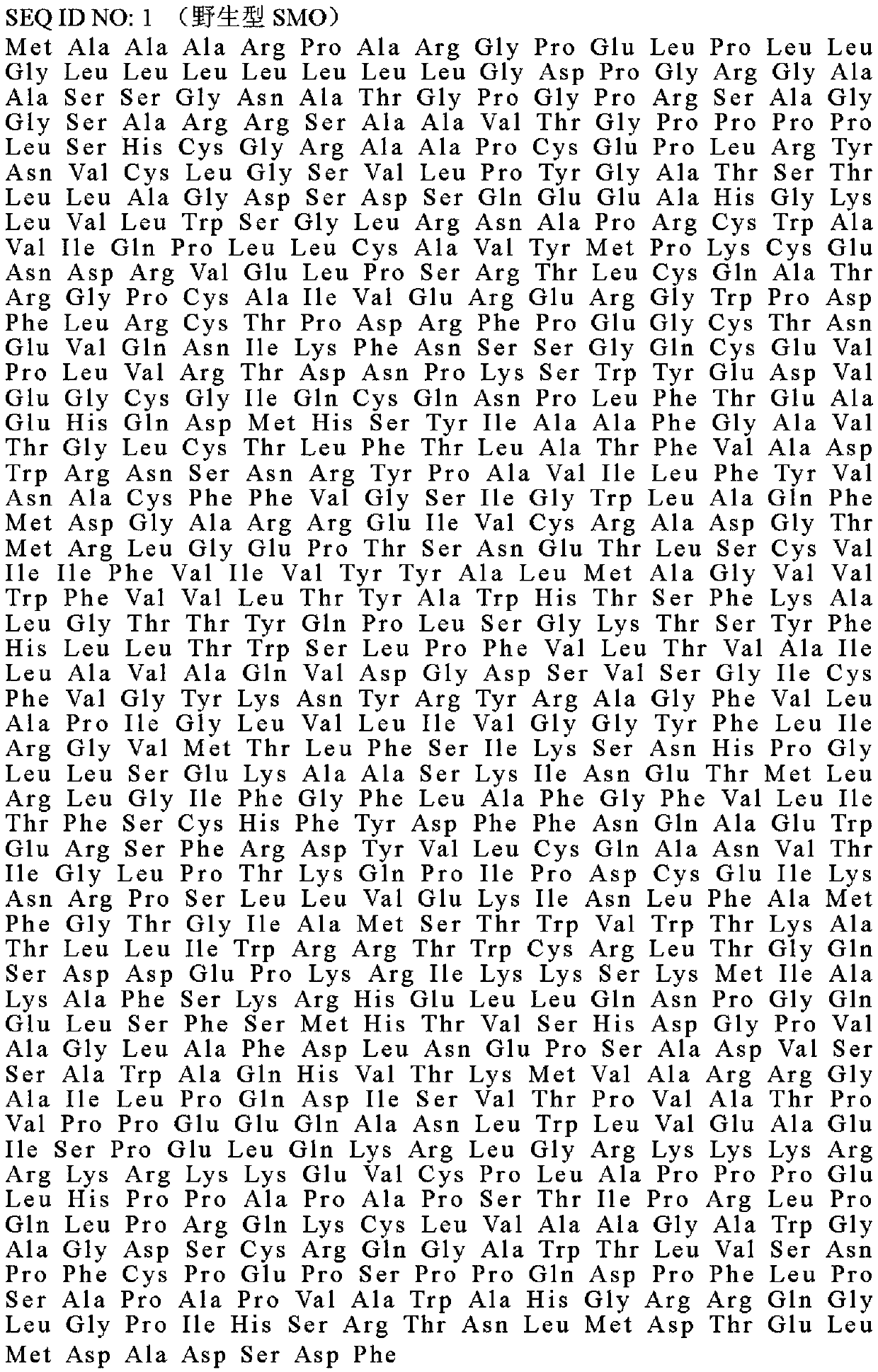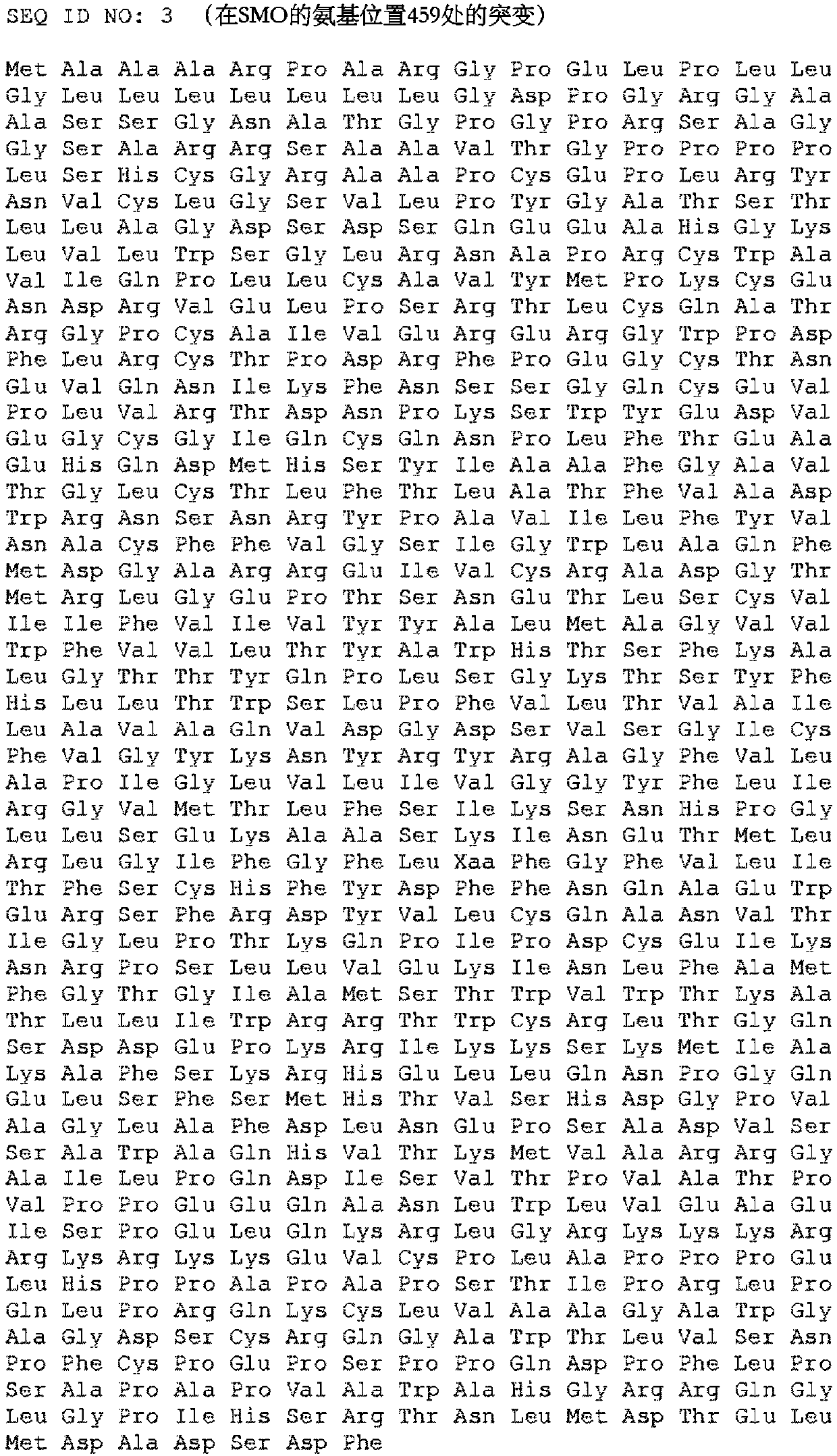Mutant smoothened and methods of using same
A mutant, wild-type technology, applied in the field of mutation, can solve problems such as unclear patient resistance
- Summary
- Abstract
- Description
- Claims
- Application Information
AI Technical Summary
Problems solved by technology
Method used
Image
Examples
preparation example Construction
[0364] 5. Preparation of Antibody Drug Conjugates
[0365] In an antibody drug conjugate (ADC), an antibody (Ab) is conjugated to one or more drug moieties (D) via a linker (L), for example about 1 to about 20 drug moieties per antibody (p=1 to about 20). ADCs of the formula shown below can be prepared in several ways using organic chemistry reactions, conditions and reagents known to those skilled in the art, including: (1) reaction of the nucleophilic group of the antibody with a divalent linker Covalent bond formation Ab-L followed by reaction with drug moiety D; and (2) reaction of the nucleophilic group of the drug moiety with a divalent linker reagent to form D-L via covalent bond followed by reaction with the antibody moiety. Reactions of the nuclei. Additional methods for preparing ADCs are described herein.
[0366] Ab-(L-D)p
[0367] A linker can consist of one or more linker components. Exemplary linker components include 6-maleimidocaproyl ("MC"), maleimidopro...
example
[0506] Having now generally described the present disclosure, it will be more readily understood by reference to the following examples, which are included for the purpose of illustrating certain aspects and embodiments of the disclosure only, and are not intended to limit the disclosure. .
example 1
[0507] Example 1: Genetic Analysis of Vimodegib-Resistant Basal Cell Carcinoma.
[0508] Clinical responses to targeted treatments, such as cancer therapies, can be transient due to the acquisition of genetic changes that confer drug resistance. Identification of resistance mechanisms will guide novel therapeutic strategies. Inappropriate Hh signaling has been linked to several cancers including basal cell carcinoma (BCC). Loss-of-function mutations in PTCH (~90%) and activating mutations in SMO (~10%) are the main drivers in BCC. Clinical mechanisms of resistance to vimodegib (GDC-0449) identified using exome, RNA, and copy number analyzes of recurrent basal cell carcinoma.
[0509] Such as figure 2 showed that Vimodeji resistance was associated with elevated hedgehog pathway signaling in patients with Vimodeji-resistant BCC. The results of exome sequencing and copy number analysis* of Vimodegib-resistant BCC are shown in Table 3 below.
[0510] table 3
[0511]
[...
PUM
 Login to View More
Login to View More Abstract
Description
Claims
Application Information
 Login to View More
Login to View More - R&D
- Intellectual Property
- Life Sciences
- Materials
- Tech Scout
- Unparalleled Data Quality
- Higher Quality Content
- 60% Fewer Hallucinations
Browse by: Latest US Patents, China's latest patents, Technical Efficacy Thesaurus, Application Domain, Technology Topic, Popular Technical Reports.
© 2025 PatSnap. All rights reserved.Legal|Privacy policy|Modern Slavery Act Transparency Statement|Sitemap|About US| Contact US: help@patsnap.com



